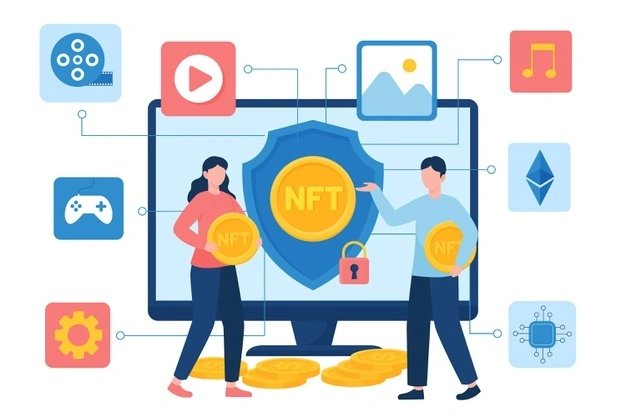With the rapid ascent of decentralized finance and non-fungible tokens, it’s tempting to assume Crypto applications are finally breaking through. However, is there genuine user growth, or are the same influencers just migrating from one touted industry to the next?
In our effort to understand what these issues mean for innovation in the future, we set out to identify solutions. First, therefore, let us examine the rise of DeFi and NFTs in further detail.

NFT and DeFi – A Possible Alliance?
NFTs are being hailed as the future of decentralized finance. NFTs reported sales of $1 million in the first week of September, and NFT sales increased to $2 million in the first week of the next month or in October 2020.
According to specialists, it is the DeFi paradigm that has aided in the liquefaction of NFTs. In addition, it has dispelled the myth that NFTs are a costly option.
Additionally, NFTs contribute to the expansion of the collateral market in DeFi financing. Collateral is required for a DeFi lending and borrowing platform. Generally, these collaterals are cryptocurrency holdings.
With the advent of NFT, different sorts of assets may now be used as collateral. For instance, an artwork or a piece of real estate may be tokenized as NFTs and used as collateral.
The application of NFT extends beyond collateral. It is capable of resembling more sophisticated financial instruments. Insurances, bonds, and options are all examples of these products. For example, each contract in insurance is turned into an NFT. These NFTs are available for secondary market trading. Another DeFi mechanism has been implemented in the world of NFTs to issue governance tokens.
Numerous platforms and non-fungible token exchanges have begun creating and distributing governance tokens.
How NFTs Help in DeFi?
- Supply is limited
You cannot have a continuous stream of NFTs with identical value propositions. Instead, they should cap everything, from fan involvement to sports highlights reels to a virtual cat.
- The verifiable scarcity
Whichever cap is chosen, it must be verifiable. Knowing the remaining NFTs and whose they are at all times is essential. It is possible to do this using a blockchain.
- Unique
Unlike Bitcoin, NFTs are one-of-a-kind. Each token is unique. Consider them similar to a movie or concert ticket; they grant access to an event to a specific individual. Even if someone stole your concert ticket (together with your personal information), the new bearer would need to confirm their identity to attend the event.
- Indivisible
For example, a Bitcoin may be divided into a million satoshis, or you can break a $100 note into a hundred $1 bills. A non-destructive test cannot be subdivided into subsidiary parts, effectively eliminating their value proposition, limited to a single bearer.
- Utilization specific
You cannot use an NFT to purchase a cup of coffee, but you may use it just for a reason it was purchased, whether that is listening to music, attending an exclusive party, or rearing a cat.
We’ve discovered that NFTs all share a value proposition and some essential features regardless of their form. Is this anything that can be utilized via DeFi?
What are the Implications of NFTs for Blockchain?
It all began in 2016 when some of the first NFTs were issued using Bitcoin-based trade cards. These early NFTs were released on the Ethereum blockchain in 2017 via CryptoPunks, a site that allows users to purchase NFTs symbolizing artwork.
With the launch of CryptoKitties in December 2017, the real excitement began to build. The platform takes advantage of NFTs to represent the individual ownership of cats on the blockchain.
As of now, these two initiatives have raised about 131 million USD in Ether.
Hundreds of more NFT versions have become available on the market in the years following this first NFT boom. In addition, numerous standards have been developed to ease the issuing of NFTs since the inception of using NFTs on the blockchain.
One of the most popular standards on the Ethereum blockchain is ERC-721, which provides a standard for creating and trading non-fungible assets.
ERC-1155 is a more current, updated standard that permits fungible and non-fungible tokens in a single contract. This standardization of NFTs ables better interoperability, allowing for the relatively easy transfer of unique assets between applications, enabling new use cases.
Conclusion
Verifying ownership is one of the essential aspects of combining NFT and DeFi. Due to the ease with which NFT ownership may be established, the DeFi space becomes available for NFT holders to secure loans using NFTs as collateral.
It is vital to know that NFT’s blockchain development services can give value to virtually anything.
On the other hand, services from Etelligens Technologies assist in maximizing the value of certain assets. It would be a shame if NFT DeFi didn’t advance the frontiers of innovation. Increasingly, NFT-backed loans are gaining popularity.